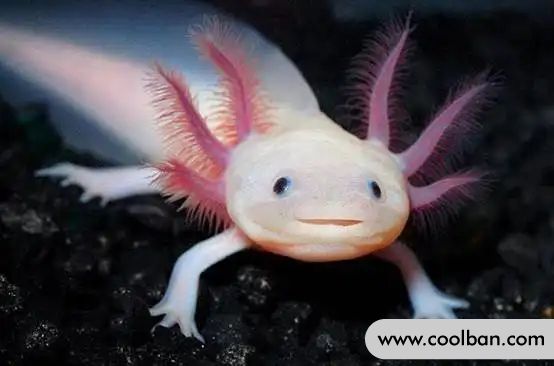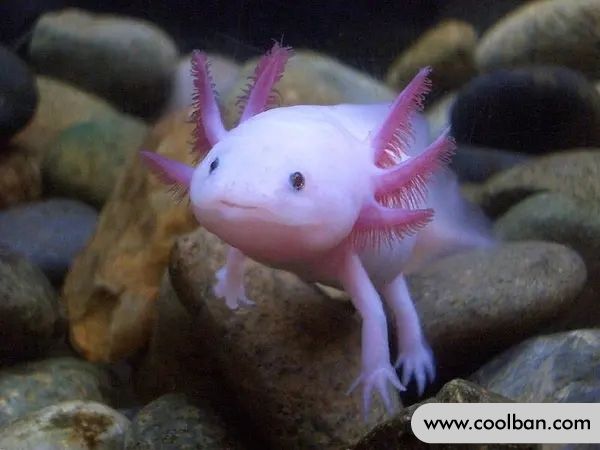The living environment of salamanders
Salamanders have long tails and poor eyesight, so they hunt only on live bait. Adult salamanders are about 61 to 155 mm long, and their skin is relatively smooth with small warts and fragile ridges.
The salamander consists of five parts: head, neck, trunk, limbs and tail. The salamander has a flat head, a small and thick tongue, and an oval shape. The front and rear ends are connected to the mucosa of the floor of the mouth. The limbs are weak and weak, and the fingers and toes are not webbed; the tail is flat on the side. The male anus is hypertrophic and the anal fissure is larger; the female anus is mound-shaped and the anal fissure is short. The salamander has an inconspicuous neck, a flat trunk, and well-developed limbs, with four fingers on the front limbs and five toes on the hind limbs. The fingers (toes) are not webbed, and the tail is flat and long.
The vomer of the salamander is "∧"-shaped, with prominent lip folds, one front jaw, and no suture in the middle of the nasal process; the maxilla and pterygoid are short and far apart. The basal hyoid cartilage has 1 pair of fingers, both of the 2 diagonal branchial bones are ossified or only 1 pair, and only 1 pair of the upper branchial bone is ossified. Larvae have balanced branches, 3 pairs of external gills, pinnate; caudal dorsal folds originate from the front of the body, and the fin folds are low and straight. Salamanders are small, quadrupedal, with moist skin, and most are brightly colored and conspicuous in appearance. The king salamander is the largest, with a body length of up to 2.3 meters.
Salamanders have tails that are similar in shape to lizards but lack scales. Unlike frogs, it has only one long tail throughout its life. Its limbs are underdeveloped, and adults can be divided into aquatic, terrestrial and semi-aquatic. The aquatic type lays eggs in the water, the terrestrial type returns to the water to lay eggs when spawning, and a few species lay eggs in the wetlands, and the juveniles develop and grow in the water.

The living environment of the salamander
Newts prefer habitats in swampy areas. They are often found in ponds or rice fields. They hibernate in sub-zero temperatures during the cold season, under cracks or rocks in the ground. In spring, they appear in water-rich puddles or rice fields on the mountainside.
Most adult salamanders hide during the day and come out to feed at night. Some emerge from the ground during spawning season, or until the temperature and humidity of the environment are suitable for them to survive. Some salamanders, especially those of the lungless salamander family, are entirely terrestrial animals that live far from rivers and ponds.
Since the salamander's body surface is semi-permeable, which can lead to water loss, salamanders mostly live in a humid environment. Species with better terrestrial ability can be farther away from water, but the living environment is still dominated by humid lichen environments, as for those species that are more dependent on water, such as the overlord salamander, they prefer to live in one environment Use low temperature and clean water. It can be seen that when rearing salamanders, an environment close to saturated humidity and a pond for feeding, hiding and resting are essential.

Feeding knowledge of salamanders
Salamanders love to eat insects, especially small animals such as worms and snails. They rarely swim and mostly feed underwater. The main reason is that its eyesight is relatively poor, and it is busy looking at real objects, and can only rely on its senses to identify food.
Most salamanders are relatively benign species, and the stocking density and number can be decided by the breeder according to the rearing capacity and the configuration of the space. Many strange biological behaviors can be observed in rearing salamanders, among which the regeneration of feet, strange mating behaviors, and the alternation of terrestrial and aquatic types are the most colorful. The salamander's vitality is very strong, especially its self-healing ability is very good, so sometimes it is found that when an individual is amputated due to mechanical trauma, granulation will grow from the wound in a short period of time, and gradually develop and repair to the original state.
Salamanders are very shy creatures, they usually hide in damp environments or underwater, many salamanders live their entire lives in water, while others live entirely on land, and some even live entirely in damp, dark burrows. Most salamanders, whether they live on land or in water, lay their eggs in water.

Salamanders crawl very slowly on their short four legs, whether on the surface, in trees or underground. Amazingly, they can use their front feet or toes to walk on the muddy ground at the bottom of a pond and use their tails to speed up their walking.
Most salamanders are bright and beautiful, but poisonous. They use this bright and eye-catching color as a warning to keep those predators away. When a snake attacks a salamander, the salamander's tail secretes a gelatinous substance, and they slap the snake's head mercilessly with their tails until the snake's mouth is stuck with the secretions, occasionally a long snake is caught by the salamander 's slime gets stuck in a ball and can't move.
Salamanders also contain a deadly bacterium in their small glands, which they can use to produce a toxin called tetrodotoxin. When a salamander is attacked, it immediately secretes this deadly neurotoxin, preventing it from eating and moving around.
